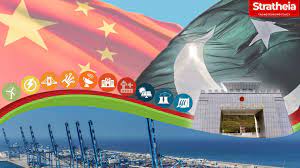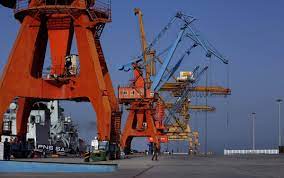CPEC: Tough to compete, impossible to beat

Celina Ali
Islamabad: No new economic corridor can match the brilliance of the China-Pakistan Economic Corridor (CPEC) which has already starting giving huge positive results.
During the recent G20 Summit hosted in New Delhi, a Memorandum of Understanding (MoU) was announced by several nations and entities, including the United States, India, Saudi Arabia, the United Arab Emirates, France, Germany, Italy, and the European Union.
This MoU signifies their commitment to develop a novel economic corridor known as the India-Middle East-Europe Economic Corridor.

This proposed corridor, designed to connect Asia, the Middle East, and Europe, appears to be a response to the well-established CPEC which is a significant multibillion-dollar initiative that forms part of China’s broader Belt and Road Initiative (BRI).
The CPEC was initiated in 2008 with the purpose of establishing extensive railways, telecommunications infrastructure, and technological advancements, including Special Economic Zones (SEZs).
This project connects China to Pakistan, stretching from Kashgar to the port city of Gwadar. The primary objective is to stimulate economic activity in both nations, and both China and Pakistan have been dedicated to furthering its development, considering it a pivotal and strategically vital endeavor.
Chinese President Xi Jinping has characterized the CPEC as a symbol of friendship between the two nations, built on trust and mutual support.
According to the statement released by the White House, the announcement of the new corridor took place during the G20 Leaders’ event on the Partnership for Global Infrastructure and Investment.

This proposed corridor is described as a ‘landmark’ initiative aimed at fostering economic growth through enhanced connectivity and economic integration across two continents. It is anticipated to unlock sustainable and inclusive economic development.
This ambitious project intends to usher in a new era of connectivity by establishing a railway system that links ports across Europe, the Middle East, and Asia. The United States and its allies envision connecting both continents to commercial centers, promoting the development and export of clean energy, laying undersea cables, establishing links between energy grids and telecommunication networks to enhance access to reliable electricity, fostering innovation in advanced clean energy technology, and ensuring secure and stable internet access for communities.
Countries involved in the India-Middle East-Europe Economic Corridor project include Saudi Arabia, France, the European Union, Germany, India, Italy, the United Arab Emirates, and the United States. This initiative represents a significant geopolitical development, with nations and regions vying for economic advantages through enhanced connectivity and infrastructure development.
The finalisation of the new corridor will take time even if it materialises. The CPEC will have covered thousands of miles by the time the new corridor is possibly launched.
The CPEC is essentially not against any country which is why both China and Pakistan have been inviting so many nations to join the mega project.
Pakistan has also been trying to attract foreign investors to invest money in the CPEC SEZs which provide mouthwatering opportunities.
CPEC is an original project which will be tough to compete and impossible to beat.





